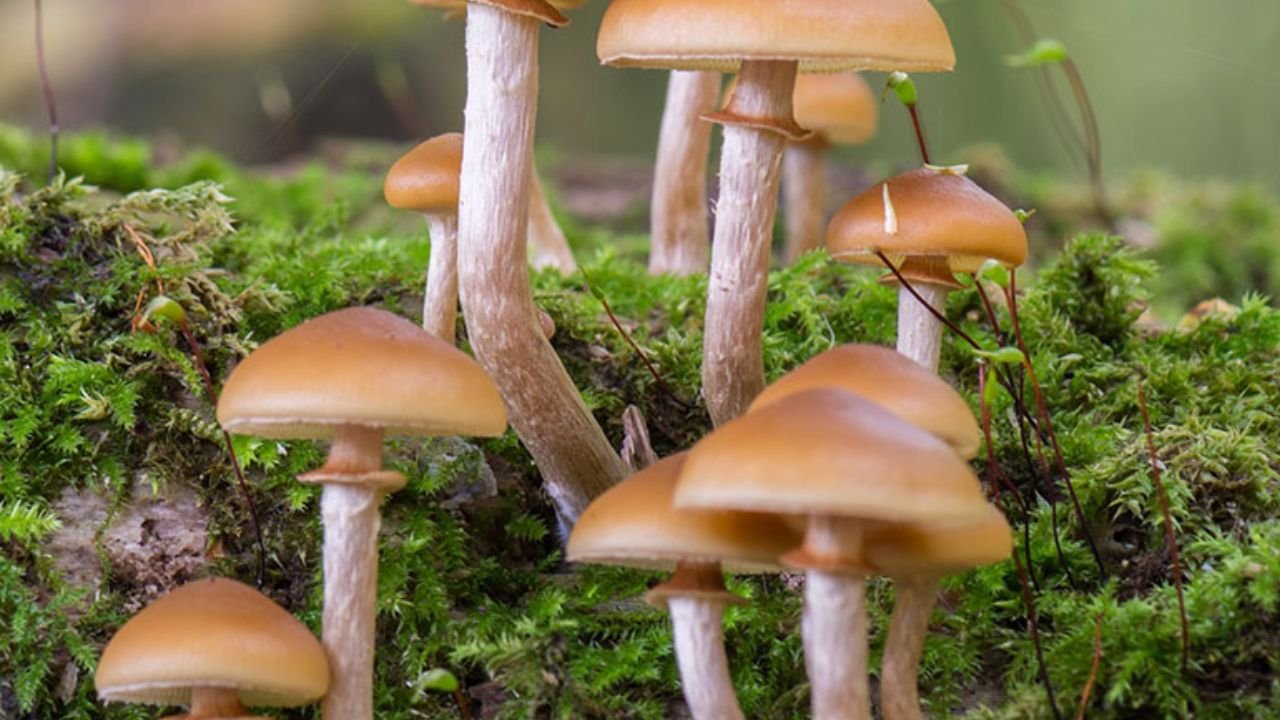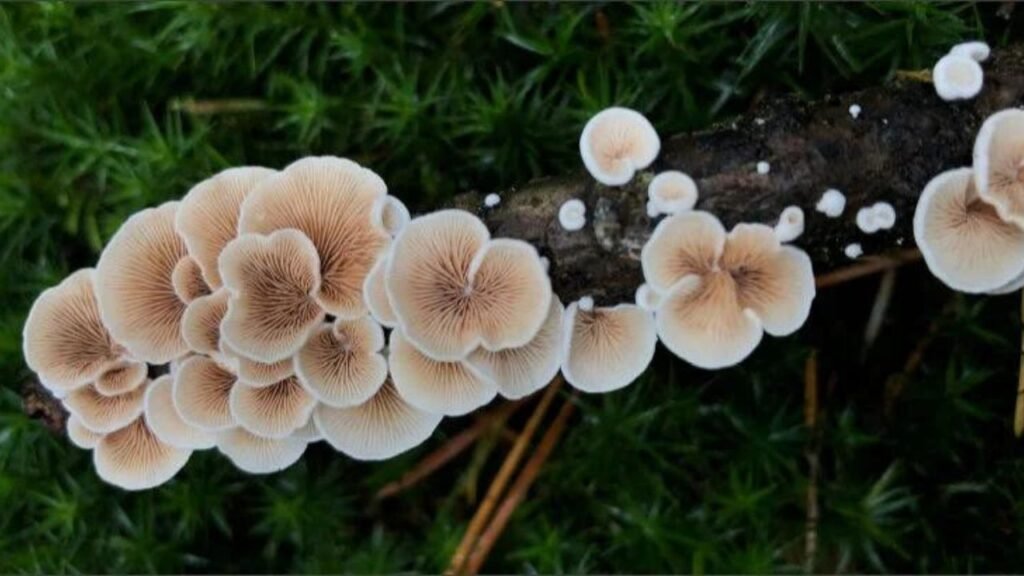Magic Mushroom
Mycelium Bruising: Unveiling The Secrets Of Mushroom Health
Mycelium, the vegetative part of a fungus, is a fundamental component in the life cycle of mushrooms. It’s responsible for absorbing nutrients and supporting the growth of fruiting bodies. However, mycelium is not invulnerable; It pinning can cause a condition known as “mycelium bruising.” In this 2500-word article, we’ll delve into the fascinating world of mycelium, explore the causes and consequences of mycelium bruising, and provide valuable insights into how to prevent and treat mycelium bruising delay A Comprehensive Guide To PF Tek Mushroom Cultivation pinning.
Mycelium, often referred to as the “root” of mushrooms, is a network of fine threads or hyphae that spreads throughout the substrate. It plays a crucial role in nutrient absorption, moisture regulation, and the distribution of energy within the mushroom colony. Understanding mycelium is essential for any mushroom psilocybe mycelium bruising Panaeolus Cinctulus- Exploring The Enigmatic Mushroom enthusiast.
Mycelium Bruising
Mycelium bruising is a captivating phenomenon found in the intricate world of fungi. It refers to the visual transformation of a mushroom’s underground network of fine, thread-like structures, known as mycelium when it undergoes injury or environmental stress. When these sensitive mycelial threads are disturbed, they can exhibit a striking color change, shifting from their typical white or pale hue to various shades of blue, green, or even dark black.
This transformation occurs due to the oxidation of compounds like psilocin and psilocybin, commonly found in hallucinogenic mushrooms, but can also manifest in non-psychoactive species. Mycelium bruising not only provides a glimpse into the resilience and adaptability of fungi but also serves as a fascinating clue for mushroom enthusiasts and foragers seeking to identify specific species in the wild.
Causes of Mycelium Bruising

Mycelium bruising is a phenomenon that occurs in the world of fungi cultivation, particularly with species like Psilocybe cubensis, a psychedelic mushroom. This phenomenon is characterized by the darkening or bluing of the mycelium, which is the vegetative part of the fungus, as a response to physical stress or damage. The primary cause of mycelium bruising is mechanical injury or disruption.
When the mycelium is disturbed,mycelium bruising green can release enzymes and compounds that oxidize upon exposure to air, leading to the characteristic blue or purple discoloration. Factors like excessive handling, rough harvesting, or environmental fluctuations, such as temperature changes and high humidity, can trigger this response. Mycelium bruising is of particular interest to mushroom cultivators as it can serve as an indicator of the mushroom’s overall health and vitality.
What Causes Mycelium Bruising?
Mycelium bruising, a common phenomenon in the world of fungi, is primarily caused by physical and environmental factors. Mycelium, the thread-like vegetative structure of fungi, can display discoloration or “bruising” when subjected to stress or damage. This discoloration is a result of chemical changes in the mycelium’s cells.One of the key factors contributing to mycelium bruising is the disruption of its cell walls.
When the mycelium is handled roughly, mycelium bruising pinning can rupture, leading to the release of enzymes and pigments. These enzymes react with oxygen, causing the mycelium to darken and appear bruised.Other triggers for mycelium bruising include changes in temperature, humidity, and light exposure. Higher humidity and lower temperatures often intensify bruising while
Are Bruised Mycelium and Mushrooms Bad?
Bruised mycelium and mushrooms, while not necessarily “bad” in the sense of being unsafe to consume, can indicate potential issues with the quality and freshness of the mushrooms. When mycelium or mushrooms become bruised, mycelium bruising green often means that they have been mishandled or damaged. This can lead to changes in texture, taste, and appearance.
While bruising itself doesn’t make them unsafe,what can causes mycelium bruising may affect their overall desirability in culinary applications. Additionally, bruising can accelerate the decomposition of mushrooms, shortening their shelf life. Therefore, it’s generally best to use mushrooms that are free from bruises and discoloration for the freshest and most appealing results in your dishes.
How to Avoid and What to do With Mycelium Bruising

Mycelium bruising, a common concern in mushroom cultivation, refers to the blue or dark discoloration that can occur when the mycelium (the fungal network) is damaged or stressed. To avoid mycelium bruising:
Handle your growing environment and substrate with care.
Maintain consistent and appropriate temperature, humidity, and fresh air exchange to keep the mycelium healthy.
Avoid rough handling, excessive agitation, or over-compression of the substrate.
In the event of mycelium bruising, don’t panic. It’s often a cosmetic issue and doesn’t necessarily harm the mushroom crop. To address it pinning adjust the environmental conditions to prevent further stress. Lightly mist the affected area to rehydrate the mycelium and maintain a proper FAE (fresh air exchange) to promote recovery. Remember that some mushroom species are more prone to bruising, but it usually doesn’t affect the quality of the final harvest.
Signs and Symptoms
Signs and Symptoms” refer to the physical or psychological indicators that signal the presence of a medical condition, illness, or disease. These manifestations can vary widely and serve as crucial diagnostic tools for healthcare professionals. Common signs may include visible changes in the body, such as rashes, swelling, or abnormal growths, while symptoms encompass subjective experiences like pain, fatigue, nausea, or changes in mood.
Impact on Mushroom Growth
Mycelium bruising can hinder the growth and development of fruiting bodies. The damaged mycelium may struggle to produce healthy and robust mushrooms, leading to reduced yields. These warning signals aid in identifying health issues, enabling timely medical intervention. Accurate recognition and interpretation of signs and symptoms are pivotal for early detection and effective treatment, contributing to overall well-being and recovery. Healthcare providers rely on these cues to formulate diagnoses and tailor appropriate care plans for patients.
Prevention of Mycelium Bruising

Mycelium, the vegetative part of fungi, can be vulnerable to bruising when mishandled. It a condition where the delicate, thread-like structures of the fungus become damaged, leading to reduced growth and compromised fruiting. To prevent meticulous care must be taken in cultivating fungi. Proper handling techniques, including gentle tapping rather than vigorous shaking, should be employed during inoculation and substrate preparation. Maintaining optimal environmental conditions, such as temperature and humidity, is crucial to minimize stress on the mycelium. Additionally, using high-quality materials and maintaining cleanliness in the cultivation environment helps prevent contamination and physical harm to the mycelium. By following these practices, mycelium bruising can be minimized, ensuring healthy fungal growth and a successful harvest.
How to Treat Mycelium Bruising?
Treating mycelium bruising is essential to maintain the health and vitality of your mushroom culture. Bruising, which appears as dark or discolored areas on the mycelium, is often caused by physical damage or stress. To address this issue:Start by identifying the source of the trauma and minimizing it.Ensure proper environmental conditions like temperature and humidity to reduce stress on the mycelium.
If the bruising is due to contamination, isolate the affected area and remove the contaminated substrate.Promote rapid mycelial growth by maintaining a clean and sterile environment.Healthy mycelium should recover from bruising within a few days, but consistent care and observation are crucial for a successful treatment.
Why Magic Mushrooms and Mycelium Turned Blue and Bruised
Magic mushrooms and mycelium turn blue and bruised due to a fascinating chemical reaction. This transformation is a result of the presence of compounds like psilocybin and psilocin, which are responsible for the mushrooms’ psychoactive effects. When these mushrooms are handled, touched, or exposed to oxygen, the enzymes present within them catalyze the oxidation of these compounds.
This process, known as bluing, causes the mushrooms to change color. It’s not just a sign of aging; it’s a testament to their potency. The blue and bruised appearance is like a fingerprint of their psychedelic potential. This intriguing feature adds to the allure and mystique of these unique fungi, making them a subject of both scientific study and cultural fascination.
The Role of Environmental Factors
The role of environmental factors is pivotal in shaping our world and influencing various aspects of life. These factors encompass a wide array of elements, including climate, geography, natural resources, and human-made structures. They profoundly impact ecosystems, biodiversity, and the overall health of our planet. Environmental factors also play a crucial role in human well-being, affecting everything from the quality of air and water to food production and access to clean energy. Additionally, they contribute to the emergence of global challenges like climate change and habitat destruction.
Comprehending and effectively handling these variables is crucial for attaining sustainable growth, preservation, and alleviation of the adverse effects of human actions on the ecosystem.
Identifying Healthy Mycelium
Distinguishing between healthy mycelium and bruised mycelium is essential. Maintaining a flourishing mushroom culture may be made easier by learning to recognize the telltale symptoms of a robust mycelium network.
The Importance of Monitoring
Regularly inspecting and monitoring your is a proactive measure that can help detect issues like bruising early, allowing for timely intervention.
Common Mycelium Bruising Myths
There are several misconceptions about mycelium bruising. We’ll debunk some of these myths and provide clarity on the realities of this phenomenon.
Conclusion
In conclusion, mycelium bruising is a fascinating aspect of mushroom cultivation. Understanding what can causes mycelium bruising causes, signs, and prevention methods is crucial for successful mushroom farming. Your mycelium will remain vigorous and healthy if you provide it with the proper conditions and care, which will result in many harvests of mushrooms.
FAQ:
Can Mycelium Bruising be Reversed?
Mycelium bruising can be treated and reversed with the right care and environmental conditions. However, prevention is always better than cure.
Does Mycelium Bruising Affect the Taste of Mushrooms?
Mycelium bruising typically doesn’t impact the taste of mushrooms, but it can affect their appearance and yield.
Are there Different Types of Mycelium Bruising?
Yes, can vary in intensity and appearance depending on the underlying causes.
Is bruising of mycelium a frequent problem for mushroom growers?
While mycelium bruising is a typical occurrence among mushroom producers, it may be prevented with appropriate care.
How can I Access More Information on Mushroom Cultivation?
For more information and resources on mushroom cultivation, including
In this comprehensive article, we’ve uncovered the mysteries of mycelium bruising and provided valuable insights for mushroom enthusiasts and growers. Remember, a healthy mycelium is the foundation for successful mushroom cultivation, and proper care is the key to ensuring your mushroom harvests thrive.

